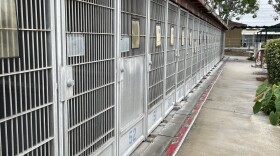The U.S. trails Switzerland and Singapore in economic competitiveness in a new global index that finds America's infrastructure, health system and primary education all lagging. The World Economic Forum's index also notes three U.S. strengths: its large market, financial sophistication and labor efficiency.
Out of 138 economies worldwide, the U.S. "does not rank in the top 10 on any of the basic requirements pillars (institutions, infrastructure, macroeconomic environment, health and primary education)," this year's Global Competitiveness Index says. The authors add that the U.S.' high ranking is supported by its "innovation, business sophistication, market size, financial market development, labor market efficiency, and higher education."
It's the third straight year at No. 3 for the U.S., which hasn't ranked No. 1 in global economic competitiveness since 2008. In the past decade, the U.S. has fallen out of the top five twice: in 2006, when it was sixth, and 2012, when it was seventh.
Other notable findings in the index:
- The Netherlands rose to No. 4, just ahead of Germany
- Japan fell from No. 6 to No. 8
- China was ranked No. 28 for the third consecutive year
- India climbed to No. 39, reflecting a 32-slot jump in the past two years
- Panama rose eight slots to No. 42 — one spot ahead of Russia
- Mexico rose six slots to No. 51
The index is the heart of a nearly 400-page report that takes the world's economic temperature as it ranks its economies. According to the WEF's managing board member Richard Samans, this year's edition identifies "a large challenge — how to build a more prosperous and inclusive world for all."
The economic zeitgeist in 2016, Samans says, is one "of rising income inequality, mounting social and political tensions, and a general feeling of uncertainty about the future."
Referring to the world's current economic status as "the Fourth Industrial Revolution," the report lists ways that economic gains can reach more of the world's population. The list includes business that can carry out innovations, but also "sound institutions, both public and private; basic infrastructure, health, and education; macroeconomic stability; and well-functioning labor, financial, and human capital markets."
Here's the top 10, along with the percentage that separates them from the world's best:
1. Switzerland 0.00% from best
2. Singapore 1.56% from best
3. United States 1.90% from best
4. Netherlands 4.12% from best
5. Germany 4.13% from best
6. Sweden 4.78% from best
7. United Kingdom 5.47% from best
8. Japan 5.63% from best
9. Hong Kong SAR 5.71% from best
10. Finland 6.26% from best
And here are the bottom 10 economies:
129. Congo, Democratic Rep. 43.38% from best
130. Venezuela 43.76% from best
131. Liberia 44.77% from best
132. Sierra Leone 45.58% from best
133. Mozambique 46.11% from best
134. Malawi 47.02% from best
135. Burundi 47.33% from best
136. Chad 49.27% from best
137. Mauritania 49.33% from best
138. Yemen 52.84% from best
To compile the index, the Swiss-based World Economic Forum uses 12 economic "pillars" that range from four basic requirements — a country's institutions; infrastructure; macroeconomic environment; and its health and primary education — to other factors: higher education and training; goods market efficiency; labor market efficiency; financial market development; technological readiness; market size; business sophistication; and innovation.
Copyright 2016 NPR. To see more, visit http://www.npr.org/.






